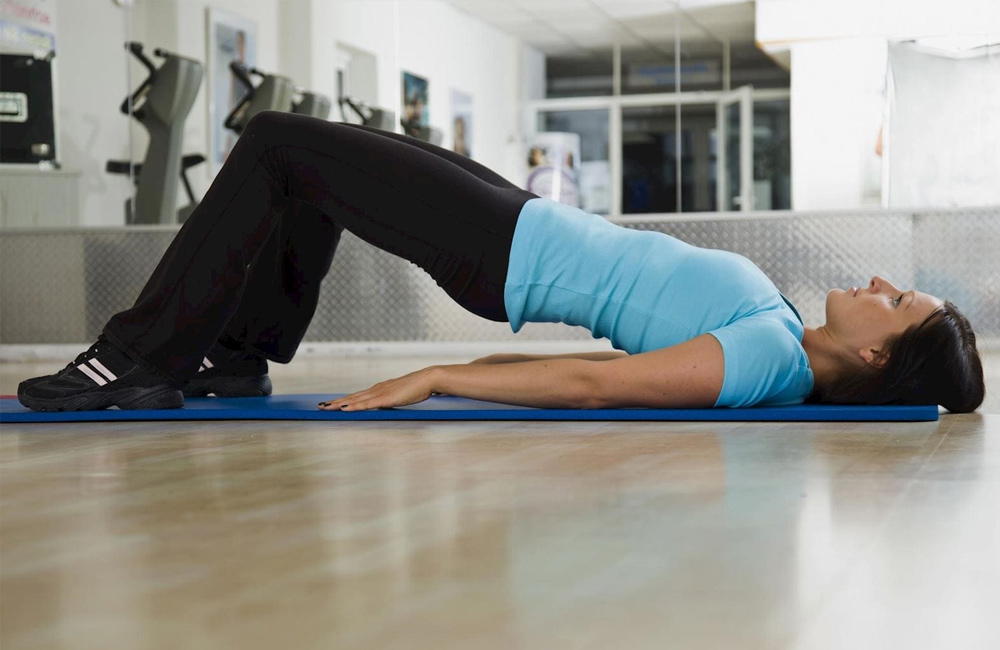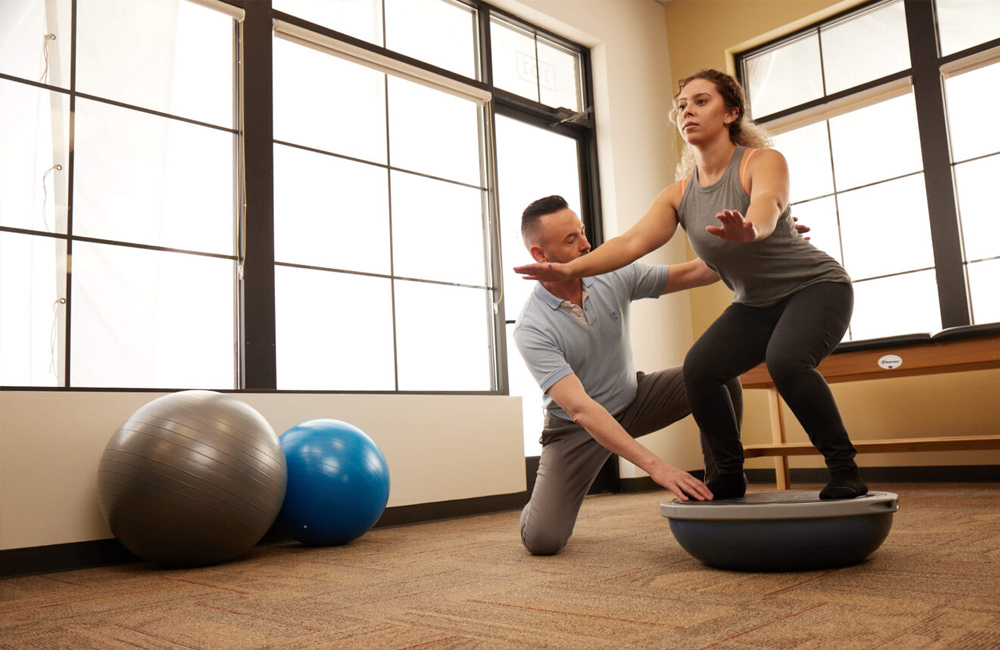
Injuries from sports, accidents, or daily activities can significantly impact your mobility and overall quality of life. Physical therapy and targeted exercise routines play a crucial role in the rehabilitation process, helping to strengthen injured areas and promote recovery. With the right approach, these routines can accelerate healing and help you regain your pre-injury fitness level, enhancing your quality of life through improved function and reduced pain. This article will guide you through effective exercise routines explicitly designed to strengthen various body parts prone to injury, such as the ankles, knees, wrists, and core muscles.
Understanding the Connection Between Muscles and Bones
The human body is a complex system where muscles are intricately connected to bones through tissues. Injuries often occur due to overuse, accidents, or the natural aging process, affecting this connection and leading to pain and reduced function. Strengthening these areas through physical activity is essential to recovery and long-term health.

Full Body Workout for Overall Strength
Starting with a full-body workout is beneficial for maintaining balance and stability across all muscle groups. A typical session should last about 30 minutes and include exercises that engage the entire body, such as:
Chest Press
Begin by lying on a bench with your feet shoulder-width apart. Push the weights from your chest upwards and slowly return to the starting position. This exercise helps strengthen the upper body and core simultaneously.
Squats
Stand with your feet shoulder-width apart. Bend your knees and lower your hips as if sitting in a chair, then slowly return to the starting position. This targets the lower back, hips, knees, and ankles.
Targeted Strength Training for Specific Areas
For injuries to specific areas like the ankles, knees, and wrists, focused strength training can help reinforce these weaker spots.
Ankle Rotations
Sit with your foot off the ground and rotate your ankle in a circular motion for about 20 minutes. This helps maintain mobility and strengthens the tissues around the ankle.
Knee Extensions
While sitting, slowly raise your injured leg until it is straight, hold it for a few seconds, and lower it back down. Repeat this exercise to build strength in the knee area.
Wrist Flexes
Hold a lightweight or a resistance band in your hand with your arm extended. Flex your wrist upward and then downward. This exercise is ideal for strengthening the muscles and tissues connecting to the wrist.
Incorporating Physical Therapy Techniques
Physical therapy involves more than just exercise; it also includes manual therapy and education to prevent future injuries and manage pain. For instance, physical therapists may use techniques to manipulate the soft tissue that connects muscles to bones, improving flexibility and reducing the risk of injuries due to overuse.
Core Strengthening Exercises
The core muscles are vital for overall stability and injury prevention, particularly in the hip and knee regions. Practical exercises for strengthening the core include:
Planks
Lie face down, then lift your body on your toes and elbows, holding your body straight like a plank. This engages the entire core, which supports the spine and lower body.
Bicycle Crunches
Lie on your back with your hands behind your head and pedal your legs like a bicycle. This affects the abdominal muscles and the hip and knee joints.

Enhancing Flexibility and Reducing Injury Risk
Flexibility is crucial for injury prevention and can enhance the effectiveness of strength training exercises. Incorporating stretches into your routine helps to keep the muscles and connective tissues flexible, reducing the risk of injuries related to tightness or overuse. Key stretches include:
Hamstring Stretch
Sit on the ground and extend one leg out. Reach toward your toes, keeping the other leg bent for balance. Hold for 15-30 seconds and repeat on the other side. This stretch is beneficial for the lower back and legs.
Shoulder Stretch
Bring one arm across your body and use the other arm to pull it closer, stretching the shoulder muscles. Hold for 15-30 seconds and repeat on the other side.
Routine Structure and Consistency
Developing a consistent routine is crucial for the success of any rehabilitation program. It’s essential to structure your workouts to include a variety of exercises that target different areas of the body, ensuring comprehensive strengthening and flexibility. Always start with a warm-up to prepare the body for physical activity and end with a cool-down to help muscles recover and prevent stiffness.
Recovering with InjuryDocsNow
If you’re navigating the path to recovery after an injury, seeking guidance from no-fault injury doctors can be an integral step. InjuryDocsNow is a specialized network that connects you with medical professionals well-versed in treating injuries from accidents or overuse. These professionals offer personalized care plans tailored to each individual’s specific recovery needs, ensuring that every aspect of your rehabilitation is covered.
InjuryDocsNow simplifies the often complex process of recovery by providing direct access to a variety of specialists experienced in different areas of injury recovery—from chiropractors and orthopedists to neurologists and physical therapists. This multidisciplinary approach ensures comprehensive treatment that addresses all facets of your injury.
Moreover, InjuryDocsNow understands the financial burdens that can accompany injuries. Many doctors in their network accept medical liens and work with insurance companies to negotiate claims, which can alleviate the stress of upfront medical costs. This financial support allows patients to focus solely on their recovery without the added stress of handling complex billing issues.
InjuryDocsNow also features a user-friendly interface that makes locating and connecting with your area’s healthcare provider easy. Whether you’re dealing with a recent injury or suffering from lingering pain due to a past incident, InjuryDocsNow provides the resources to find the best care tailored to your situation.
For anyone looking to safely strengthen injured areas and accelerate their recovery process, visiting InjuryDocsNow is a proactive step toward regaining full health and mobility. Their expertise and supportive network can guide you through an effective recovery process aligned with your personal health goals.
Empowering Your Recovery with Targeted Strength and Expert Guidance
Embarking on a recovery journey after an injury involves more than just healing physically; it’s about regaining strength, confidence, and the ability to perform daily activities without limitation. Strengthening exercises are a cornerstone of this process, providing physical benefits and boosting mental well-being. By incorporating targeted exercises into your routine, you can help ensure that your body’s muscles and bones remain robust and resilient.
Listening to your body and communicating with healthcare providers about any discomfort or concerns is essential when following a recovery plan. This dialogue ensures your regimen is adjusted according to your recovery’s pace and effectiveness. Moreover, consistent practice and dedication to your exercise routine can significantly speed up the healing process and prevent future injuries.
In addition to physical exercise, consider other recovery aspects, such as adequate nutrition, hydration, and rest. These elements are crucial in supporting your body’s natural healing processes and can enhance the benefits of your physical therapy.
For those navigating the complexities of injury recovery, remember that resources like InjuryDocsNow provide access to professionals specializing in rehabilitation from accidents and injuries. These experts can offer guidance, support, and personalized care plans tailored to your needs.
Ultimately, the goal is to recover from the injury and improve your overall health and fitness. With the right approach, exercises, and expert advice, you can recover comprehensively and return to a fulfilling, active lifestyle. Always reach out to specialists like those at InjuryDocsNow, who can provide the support and care necessary to navigate your path to recovery effectively.
Frequently Asked Questions:
How long should I rest on an injured area before starting exercise?
The rest period before starting exercises for an injured area depends on the severity of the injury and medical advice. Typically, minor injuries may require a few rest days, while more severe injuries might need weeks or months. Always consult a healthcare professional to determine the appropriate rest period for your injury.
Can strengthening exercises replace physical therapy?
While strengthening exercises are beneficial, they should not replace physical therapy if prescribed by a healthcare provider. Physical therapy often includes a broader range of treatments, such as manual therapy, pain management techniques, and customized exercise plans tailored explicitly to recovery needs.
What should I do if I feel pain during an exercise?
If you experience pain during an exercise, stop immediately and consult your healthcare provider. Pain could indicate that the exercise is being performed incorrectly or that the injury has not fully healed. It’s essential to ensure that any exercise routine is safe and appropriate for your stage of recovery.
How often should I perform strengthening exercises for recovery?
A healthcare professional should guide the frequency of your exercise routine, but a general guideline for recovery is to engage in strengthening exercises 2-3 times per week. This allows your body time to adapt and recover between sessions.
Are there any specific exercises to avoid during recovery from a joint injury?
Yes, high-impact exercises such as running, jumping, or heavy weightlifting should generally be avoided during the early stages of joint injury recovery. Instead, focus on low-impact exercises like swimming, cycling, or using an elliptical machine, which puts less stress on the joints.
How can I ensure that I’m performing exercises correctly to avoid re-injury?
To ensure exercises are performed correctly, consider working with a physical therapist or a certified trainer who can guide proper form and technique. Additionally, using mirrors to check your posture and alignment during exercises can help prevent incorrect movements that could lead to re-injury.
What role does diet play in strengthening injured areas?
Diet plays a significant role in recovery by providing the nutrients needed for tissue repair and muscle growth. Focus on a balanced diet rich in protein, vitamins, and minerals that support healing. Anti-inflammatory foods like berries, fatty fish, and leafy greens can also help reduce swelling and pain.
Visit Injury Docs Now to find the right doctor and get the care and support you need for your recovery and legal success.




















































































